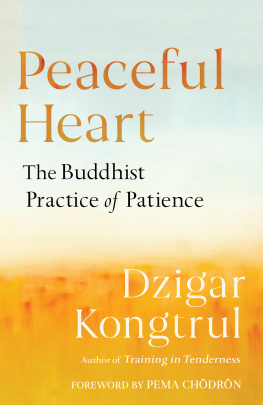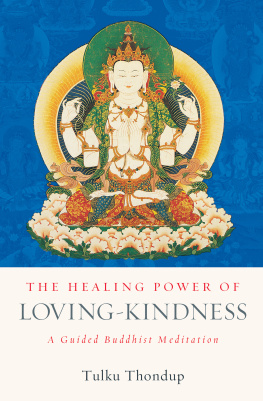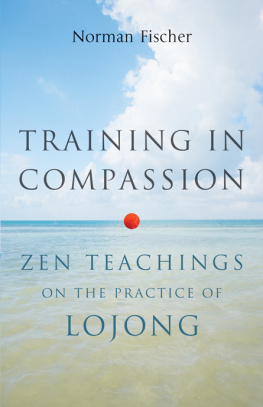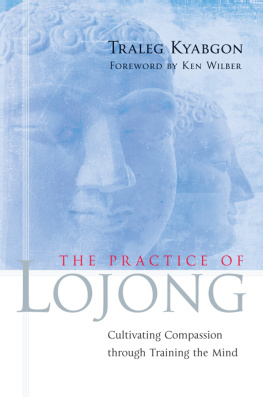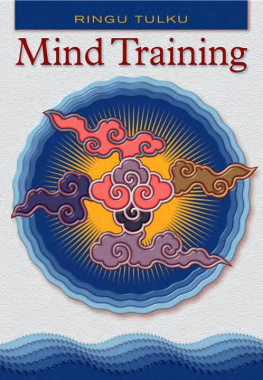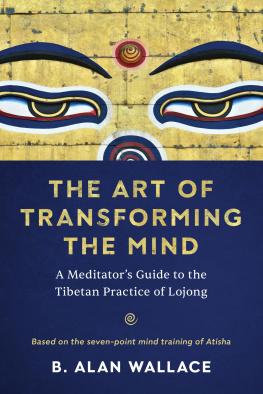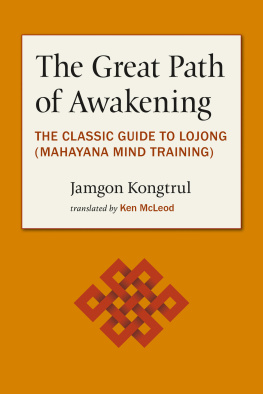A profound new approach to awakening readers loving hearts to the essence of bodhisattva wisdom: cherishing others more than oneself. This jewel of a book teaches us how to shower the light-of-love into even the darkest corners of our stressed world.
Tulku Thondup, author of The Heart of Unconditional Love
The Intelligent Heart shines a clear light on the method for exchanging self for other, developing compassion, and freeing ones heart. In addition, its fun to read, with helpful illustrations and a keen sense of humor.
Sharon Salzberg, author of Lovingkindness and Real Happiness
A wonderful addition to the growing and essential lojong literature. Dzigar Kongtruls homey, earthy words evoke the very best of the Tibetan spirit of common sense compassion. Deceptively simple, this book carries with it enormous depth of practice and understanding. My copy is rife with underlining!
Norman Fischer, author of Training in Compassion
ABOUT THE BOOK
Compassion arises naturally when one comes to perceive the lack of solid distinction between self and other. The Buddhist practice known as tonglenin which one consciously exchanges self for otheris a skillful method for getting to that truthful perception. In this, his commentary on the renowned Tibetan lojong (mind training) text the Seven Points of Mind Training, Dzigar Kongtrul reveals tonglen to be the true heart and essence of all mind-training practices. He shows how to train the mind in a way that infuses every moment of life with uncontrived kindness toward all.
DZIGAR KONGTRUL grew up in a monastic environment and received extensive training in all aspects of Buddhist doctrine. In 1989, he moved to the United States with his family, and in 1990, he began a five-year tenure as a professor of Buddhist philosophy at Naropa University. He also founded Mangala Shri Bhuti, his own teaching organization, during this period. He has established a mountain retreat center, Longchen Jigme Samten Ling, in southern Colorado. When not guiding students in long-term retreats and not in retreat himself, Rinpoche travels widely throughout the world teaching and furthering his own education.
Sign up to receive news and special offers from Shambhala Publications.

Or visit us online to sign up at shambhala.com/eshambhala.
The Intelligent Heart
A Guide to the Compassionate Life
Dzigar Kongtrul
Foreword by Pema Chdrn

SHAMBHALA BOULDER 2016
Shambhala Publications, Inc.
4720 Walnut Street
Boulder, Colorado 80301
www.shambhala.com
Cover design by Jim Zaccaria
2016 by Dzigar Kongtrul
All rights reserved. No part of this book may be reproduced in any form or by any means, electronic or mechanical, including photocopying, recording, or by any information storage and retrieval system, without permission in writing from the publisher.
LIBRARY OF CONGRESS CATALOGING-IN-PUBLICATION DATA
Names: Kongtrul, Dzigar.
Title: The intelligent heart: a guide to the compassionate life / Dzigar Kongtrul; foreword by Pema Chdrn.
Description: First Edition. | Boulder: Shambhala, 2016.
Identifiers: LCCN 2015026376| eISBN 978-0-8348-4013-3 | ISBN 9781611801781 (pbk.: alk. paper)
Subjects: LCSH: Compassion Religious aspectsBuddhism.| Religious lifeBuddhism.
Classification: LCC BQ4360.K66 2016 | DDC 294.3/444dc23
LC record available at http://lccn.loc.gov/2015026376
May bodhicitta, precious and sublime,
Arise where it has not yet come to be;
And where it has arisen may it never fail
But grow and flourish ever more and more.
There has never been a time when human beings have been free from confusion and pain, but these days things seem especially tough. You can feel it in the atmosphere. Dealing with the habits that cause ourselves and the world suffering has become a life-and-death matter. People are asking, What can I do?
The book you are holding is full of practical solutions. Though the lojong teachings have been around for a thousand years, they are very much teachings for this age. Lojong aims directly at the core of our confused mind and gives us a multitude of tips for working with our habits on the spot. Yet lojong doesnt dwell on our confusion. Its purpose is to uncover the basic wisdom and compassion that is our deepest nature. We practice lojong to connect to the natural tenderness of our heart by opening up instead of closing down. We aim to wake ourselves up so that we can help others do the same.
I feel that there is no better teacher to present this wisdom to a modern audience than Dzigar Kongtrul Rinpoche. I have known Rinpoche since the mid-1990s, when we met at a Buddhist teachers conference. Since the passing of my root teacher, Chgyam Trungpa Rinpoche, I hadnt met anyone who could sense where I was stuck. I was very good at conning everyone and talking about not getting hooked, but Rinpoche somehow had this great ability to hook me. Soon after our meeting, I asked if he would take me as his student, and he accepted. Hes continued to mess with me ever since.
Because the original work is very pithy, it can be quite difficult for a modern audience to appreciate. Rinpoches commentary makes this classic text come to life. His way of explaining the material is a great inspiration for my own teaching. Rinpoche has a wonderful sense of humor, but hes also very wrathful at times and pushes your nose into some of the undesirable qualities we human beings exhibit. You will see yourself in this book. You may not see yourself in every example, but there is something for everybody.
PEMA CHDRN
First and foremost I would like to acknowledge and pay my deepest obeisance to my root teacher, His Holiness Dilgo Khyentse Rinpoche, from whom I have received these teachings on The Mahayana Instructions on the Seven Points of Mind Training, along with all my other teachers who have greatly helped me to understand the lojong teachings. I would also like to acknowledge my debt of gratitude to Gyalse Ngulchu Tokme and Jamgon Kongtrul Lodro Thaye for their poignant and succinct commentaries on the slogans, in which they expound on their meaning, expertly illuminating particular human experiences of the egotistical mind. Without their commentaries it would have been very difficult to understand precisely what the slogans are addressing within us, as the language is profoundly dense and written in ancient colloquial Tibetan. I also pay homage to the great Mahapandita Dipamkara, who was solely responsible for reviving Mahayana Buddhism in Tibet after its initial influence had declined. And I pay deep reverence to the great and unparalleled string of pearls, the Kadampa Gew Shnyen, in particular, to Chekawa Yeshe Dorje, who put these teachings into the format of the Seven Points.
Since first hearing the lojong teachings I took a deep interest in them and became inspired to study them as a synthesis of all Mahayana and Vajrayana teachings. The little bit of understanding of them that I have come to have has greatly reduced my own suffering, though I claim no realization or knowledge whatsoever. Any understanding I have is due to the continuous blessings of my great teachers, starting with my own root lama and many other illustrious beings of this world, and His Holiness the Fourteenth Dalai Lama, from whom I draw great inspiration foremost among them. They are the true spokesmen of lojong practice. When I hear their profound expositions on lojong, such as the
Next page

